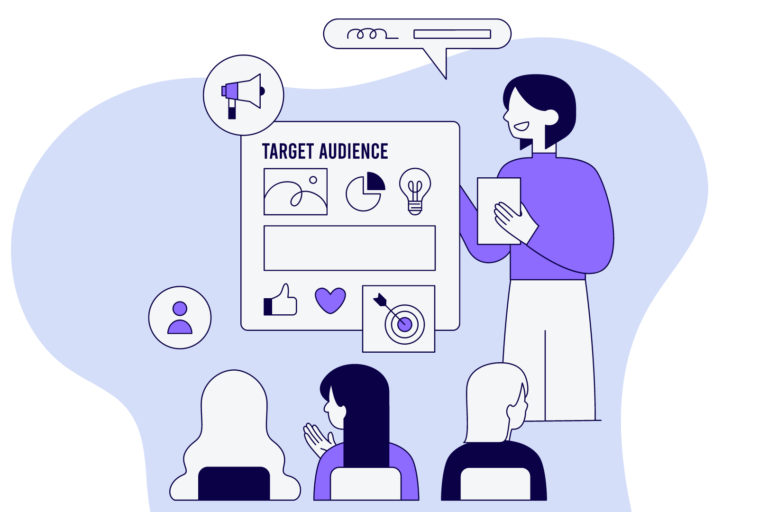In the competitive world of digital marketing, a compelling landing page can make or break your campaign. At the heart of every successful copywriting strategy lies a powerful premise — the emotional concept that not only grabs attention but keeps the audience engaged until they take action. While often confused with the unique selling proposition (USP), a premise goes beyond just benefits. It’s a carefully woven narrative that connects your message with the desires and emotions of your target market. In this guide, we’ll explore how to craft an unpredictable, authentic, and persuasive premise using proven techniques to boost conversions and drive results.
Table of Contents
It’s all about the premise
As a term in formal logic, the premise is a proposition supporting a certain conclusion. Applied to copywriting, I use the word premise to mean the emotional concept that not only attracts attention, but maintains engagement throughout every element of your landing page copy and imagery.
In other words, the premise is the concept that weaves itself from headline to call to action, tying everything together into a compelling, cohesive, and persuasive narrative with one simple and inevitable conclusion — your desired action.
The premise connects you to the emotional center of your prospect’s brain, stimulates desire, maintains credibility, and results in the opening of the wallet. It’s the unification of the prospect’s worldview + the market + the benefits + the proof + a call to action into one simple, compelling message.
Start with the prospect, not the product
There’s an old saying in direct marketing circles ... start with the prospect, not the product. In other words, what does your market want? And related to that, can you reach that market and is it big enough to be worth your time?
Is the premise the same as the USP?
You probably already know about the USP, or unique selling proposition. It’s an advertising concept that dates back many decades, but if you’re not familiar with it, here’s a quick explanation.
- An advertising guy named Rosser Reeves published a book called Reality in Advertising back in 1961. It was in that book that he introduced his concept of the unique selling proposition. Reeves said a USP has three components:
1. Each advertisement must make a proposition to the prospect. Each must say, “Buy this product, and you will get this specific benefit.”
2. The proposition must be one that the competition either cannot, or does not, offer.
3. The proposition must be so strong that it can pull over new customers to your offer.
In this day and age of hyper-competition, it’s difficult to offer features that no other competitor can. So now the modern practice of positioning is all about the space your messages occupy in the mind of your prospective customer and how well you match up with their worldviews. This is what finding a strong premise is all about. Often, it simply comes down to telling a different story.
So, is the premise a USP or not?
Modern positioning is all about story, and every story has a premise. So, in this case, your USP is also a premise. But from a copywriting/promotional campaign standpoint, a premise is a specific story or concept that supports and flows from the top-line positioning. Here’s a famous example.
-
Nike has one of the most powerful positioning statements on the planet, expressed in three little words — just do it. Beyond selling shoes, this is life philosophy boiled down to its essence, and that’s why it’s so powerful.
How to come up with a killer premise?
Premise Step One: Create the Concept
Great ideas are unique. There’s no formula for innovative ideas, and anyone who tries to tell you otherwise is selling the slickest of snake oil. That said, a great premise always has certain elements in common. It took me many years to understand that, beyond all the tactics, it’s the premise of the message that matters first and foremost.
Let’s understand the essential elements:
- Be unpredictable - The first thing you absolutely must have is attention. Without initial attention, nothing else you’ve done matters. And nothing kills attention faster than if your prospective reader, listener, or viewer thinks they already know where you’re going. Beyond curiosity, a great premise delivers an unpredictable and unexpected element that makes it irresistible.
- Be simple – Be clear and simple.
- Be real/authentic
- Be Credible
Premise Step Two: Execute with the 5P Approach
You’ve got to tell the story in a way that works, and with a structure that succeeds. A popular copywriting structure is AIDA (attention, interest, desire, action), which dates back to the early days of mass media advertising. AIDA is a useful framework, but it leaves too little room for a true understanding of what each element is intended to include.
- Premise - When it comes to getting people to take action now, as opposed to “thinking about it” (and often never returning), it all begins with the premise. Your copy needs an exceptional premise that allows you to make a resulting bold promise that attracts attention and compels your ideal prospect to read, watch, or listen to the rest of your message.
- Promise - We need to make a bold promise. Here, it may be tempting to think of the promise as being the same as your offer, but in reality, your offer is simply a component of the larger promise.
- Picture - You’re fleshing out the premise, promise, and setting up the benefits of taking action now by using vibrant language that sticks in the mind. The picture phase is all about using images, storytelling, and tangible language as a way to hold the reader’s emotional interest while you nudge them down the path to acceptance. It also keeps you focused on communicating the benefits associated with the features or facts that you need to get across.
- Proof - You’ve communicated the foundational information you want readers to accept in an emotional and brain-friendly manner. Now you’ve got to back it up with supporting proof. Statistics, studies, graphs, charts, third-party facts, testimonials, a demonstration that the features of your product deliver the benefits you’ve promised—these are all part of the Proof section of your piece. Now’s the time to play it straight and appeal to the reader’s logical mind to support the emotional triggers you pulled with the promise and picture.
- Push - The push phase is more than just a call to action. It’s about communicating an outstanding offer in a clear, credible, and compelling fashion, and then asking for action. It’s the grand finale where the premise and the purchase make as much sense to the reader as they do to you.
7A Framework for Effective Content Marketing Strategy
Agile – flexible, adaptive, basically constant iterative process based on continued research and audience feedback.
- Research & create – smart guess based on initial research
- Release
- Optimize
- Repeat
Attention
- Test Headlines / Hooks
- Follow Brand Voice
- Refine Editorial Voice
- Focus on Conversion
- Constantly refine your approach.
Authority – It’s not enough just to have an audience -- it’s how that audience feels about you. Are you the expert, the likeable expert? That again, applies to your own marketing, which is why it helps to be an industry expert or a local expert, because that creates that authority as opposed to a generalist.
Action – content that drives audience to person desired action, leads/sales often building an audience.
Acceleration – feedbacks / open-ended questions to identify frustration & desire.


